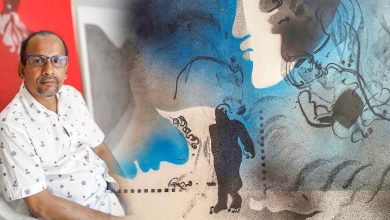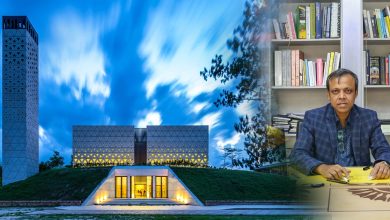Internationally acclaimed artist Kalidas Karmakar has made his mark as a fearless experimentalist who distinguishes himself with his creative explorations, perpetually searching for the sublime. Showcase seizes the chance to explore the life and work of the creative soul.
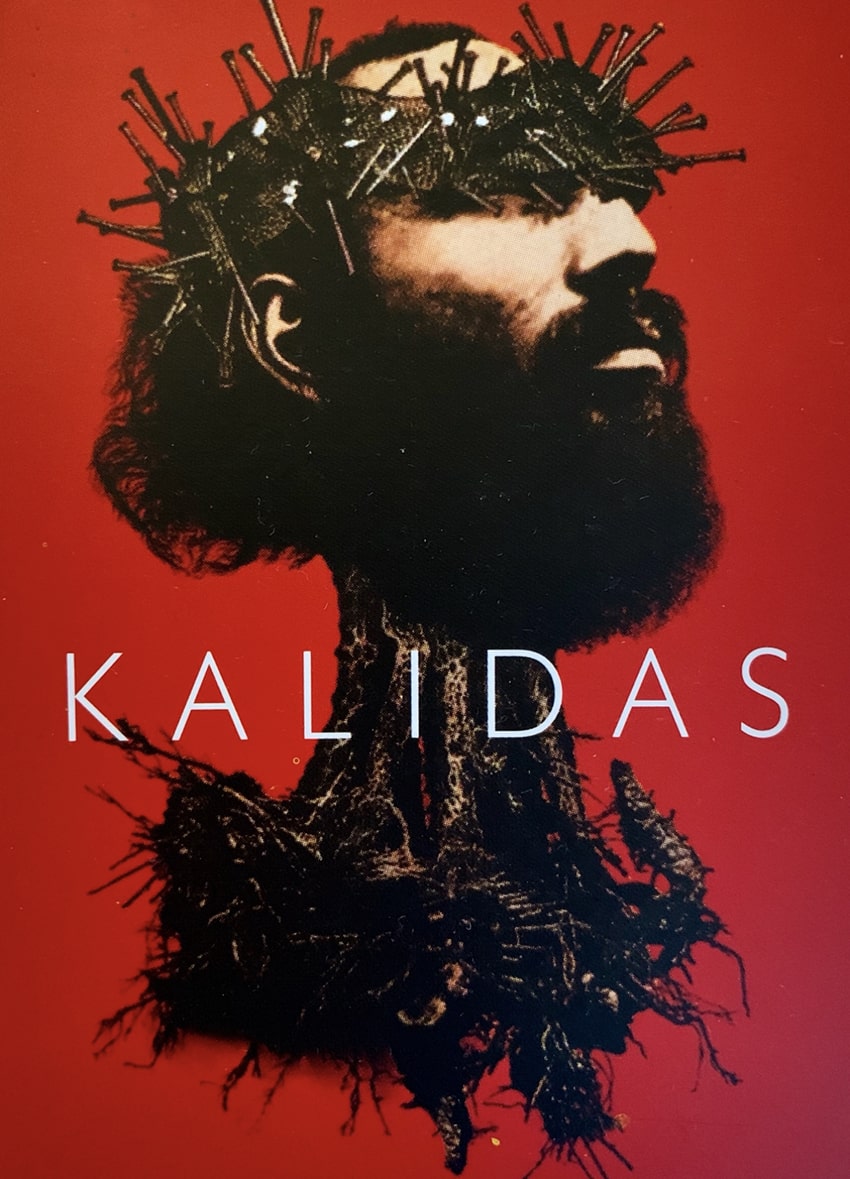
Staying true to his roots and alluvial land, he permeates unrestrained enthusiasm, energy and spirit all around him no matter where he dwells. His ingrained natural goodness and imaginative mind makes him a very significant name in the world of modern art. Kalidas Karmakar was born in Faridpur, shortly after the Bengal famine of 1943. Restless and mischievous as a child, he loved spending time outdoors, in nature. He was introduced to different types of plants by his uncle who was an herbal doctor. Reflecting upon childhood, he says, “Being an artist was never the plan for me. I liked painting but my main passion was to be a botanist. However, I didn’t pay much attention to academics and as a result; I even failed in high school. I eventually completed my college degree but realised if I continued my journey as a science student, I wouldn’t be able to excel in that field. That was unacceptable to me since I was extremely competitive and wanted to stand out in whichever field I practised.” Kalidas Karmakar’s family owned a jewellery business and hence he became familiar with art and crafts from a young age. “I believe crafting was instilled in my DNA since it just came naturally to me. It only made sense to put my mind to study art.” Kalidas had a two-year pre-degree study at the Institute of Fine Arts, (now Faculty of Fine Art, University of Dhaka) and was taught by legendary artists like Hashem Khan and Mustafa Monwar. “I remember going to Ramna Park to study landscape drawing.
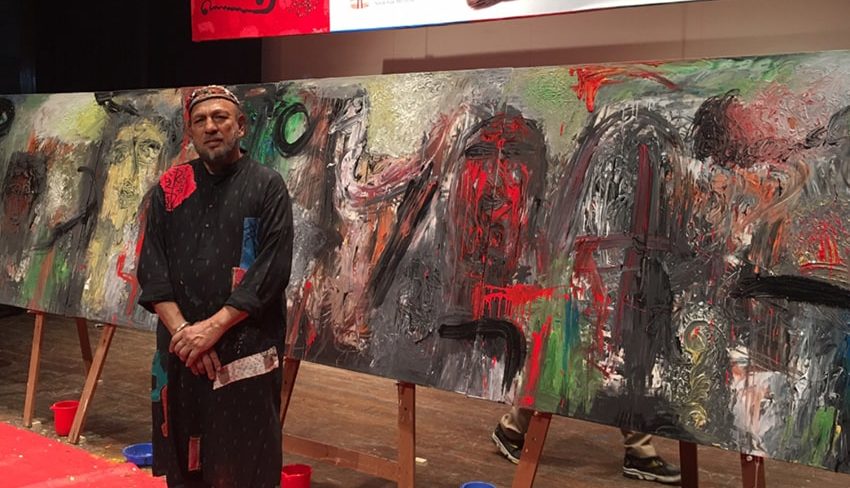
“I believe crafting was instilled in my DNA since it just came naturally to me. It only made sense to put my mind to study art.”
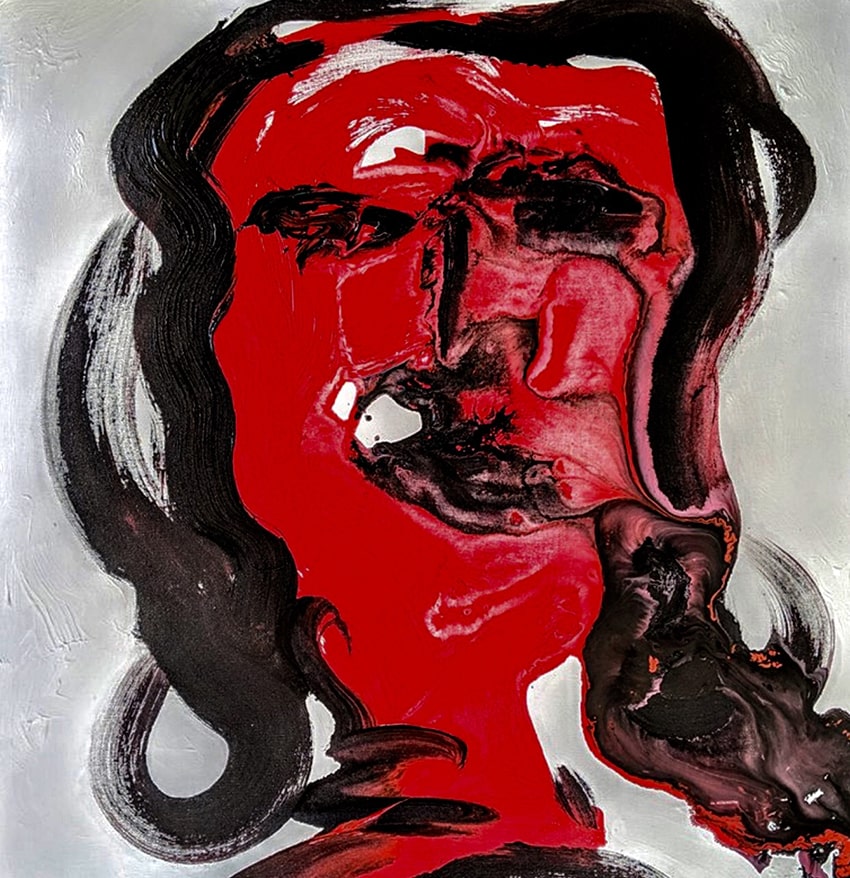
That day I made sketches tirelessly for hours. It gave me a lot of pleasure and that’s when I realized that my true calling was in art”, he exclaims. Kalidas’ artistic pursuit began in a context of suffering and destitution as he came of age as an artist right at the time of the devastating war of Bangladeshi independence. His mentor, Shilpacharya Jainul Abedin gave a letter of recommendation for his admission in the Government College of Fine Arts and Crafts in Kolkata, where he completed his graduation.
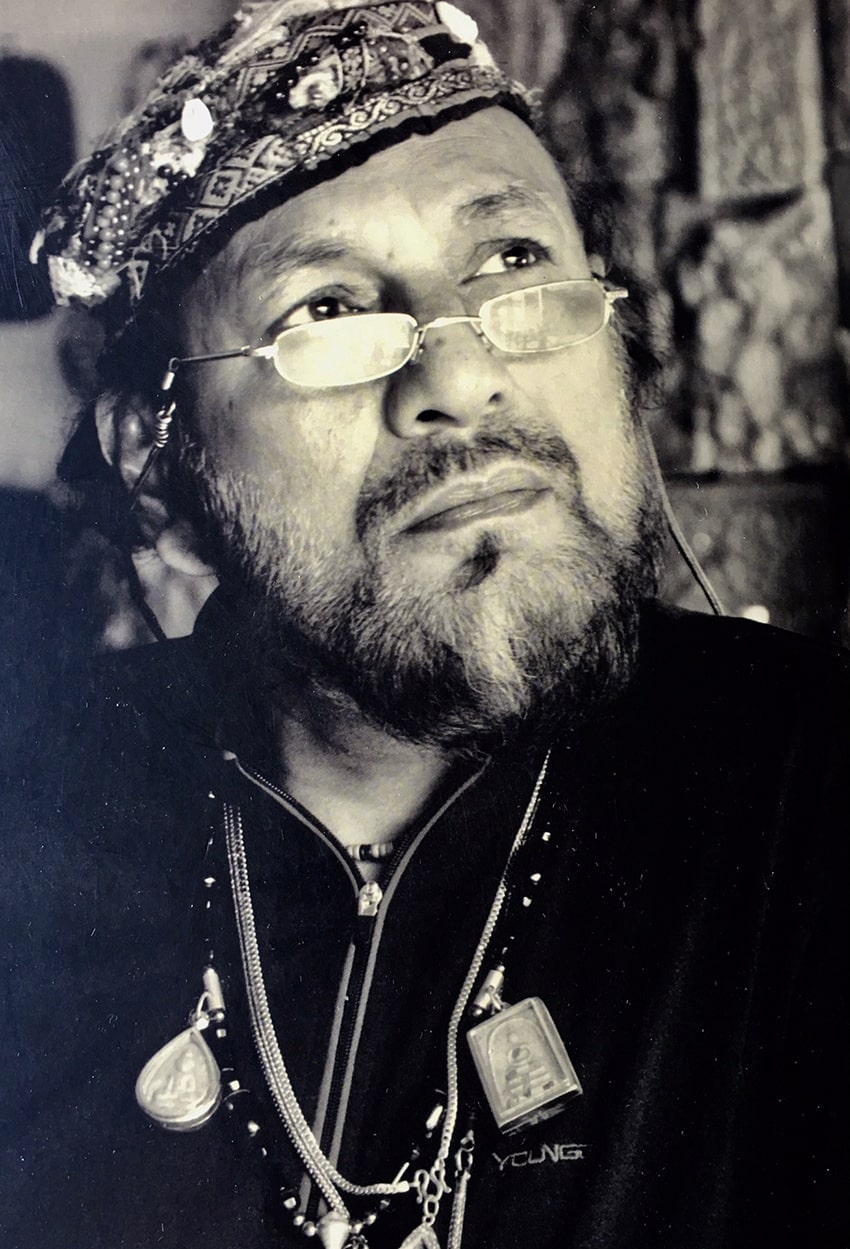
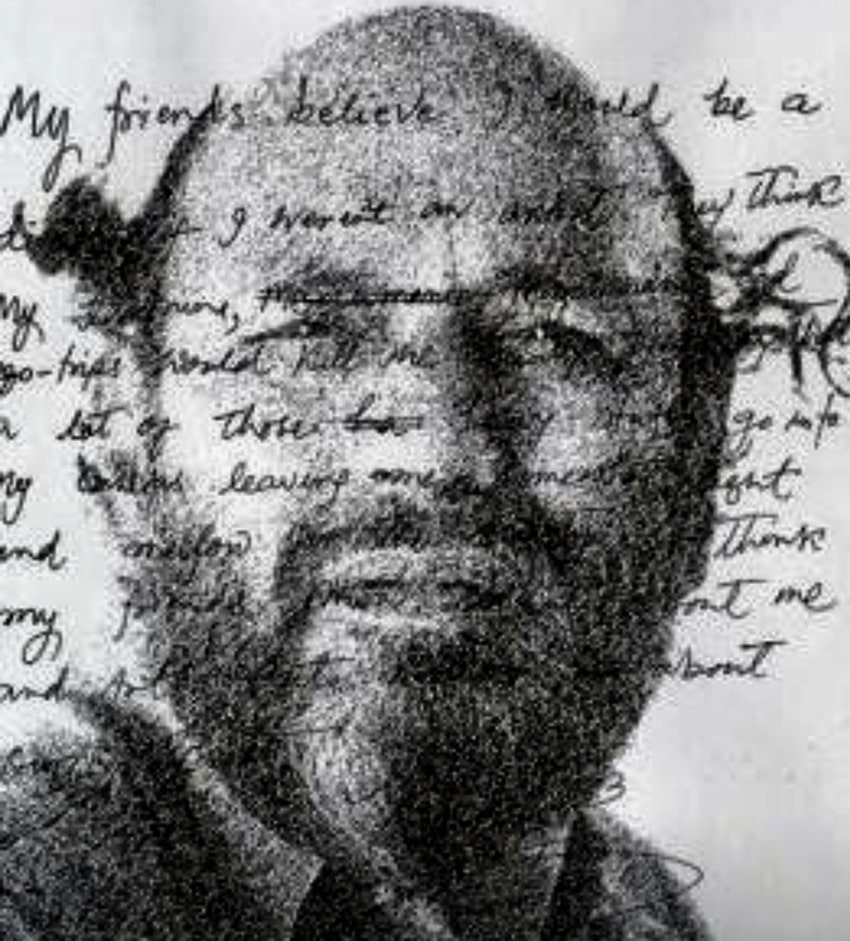
His journey then took him from Kolkata to United States and Warsaw in the 1970’s; to Paris and the famous Atelier 17 studio in the 1980’s, and later to Tokyo National University of Fine Arts and Music, and beyond. In Paris, he received the Superior Scholarship in Fine Arts, for research in multicolour etching, where he worked under the pioneer of viscosity technique, Stanley William Hayter.
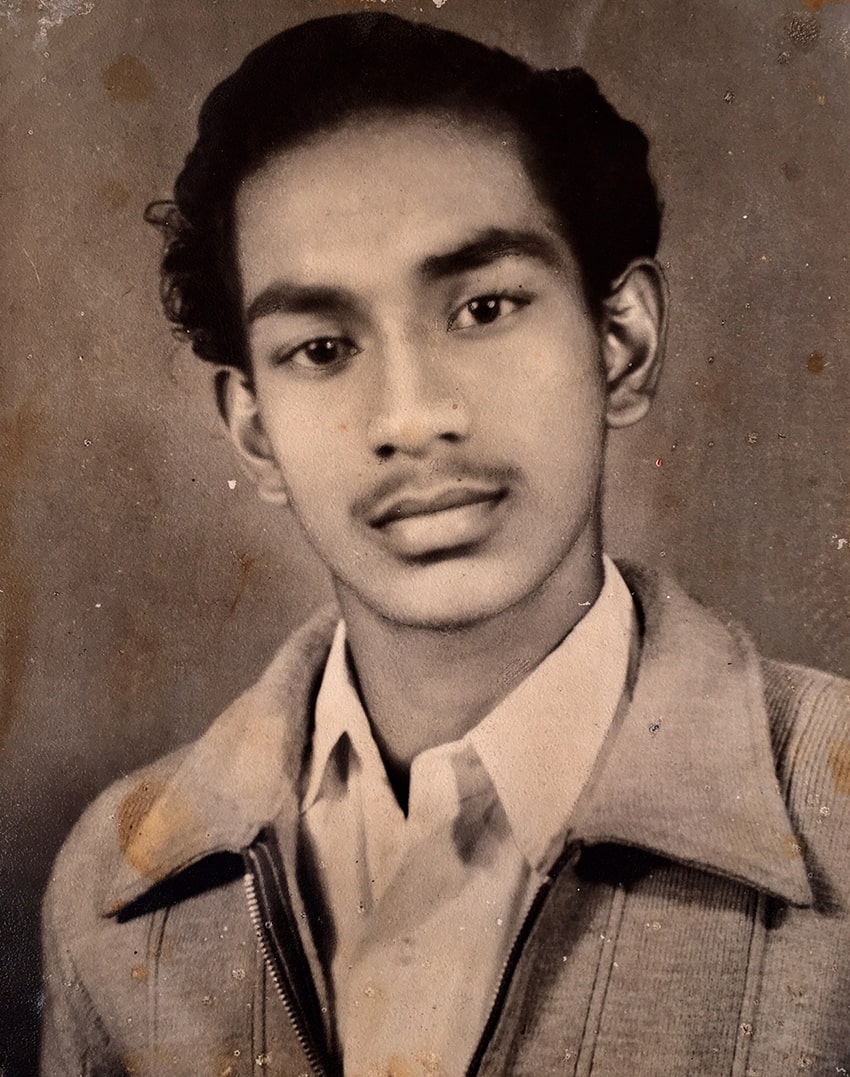
Viscosity printing is a printmaking technique that incorporates principles of relief printing and intaglio printing. Kalidas mingled this technique with Japanese woodblock printing and created some unique works which were highly appreciated. Later in the 1980’s, he returned to Dhaka and held a solo print exhibition on Graphic Art at Alliance Française de Dhaka (AFD). Through his exhibition, AFD inaugurated their gallery, which now regularly holds exhibitions.
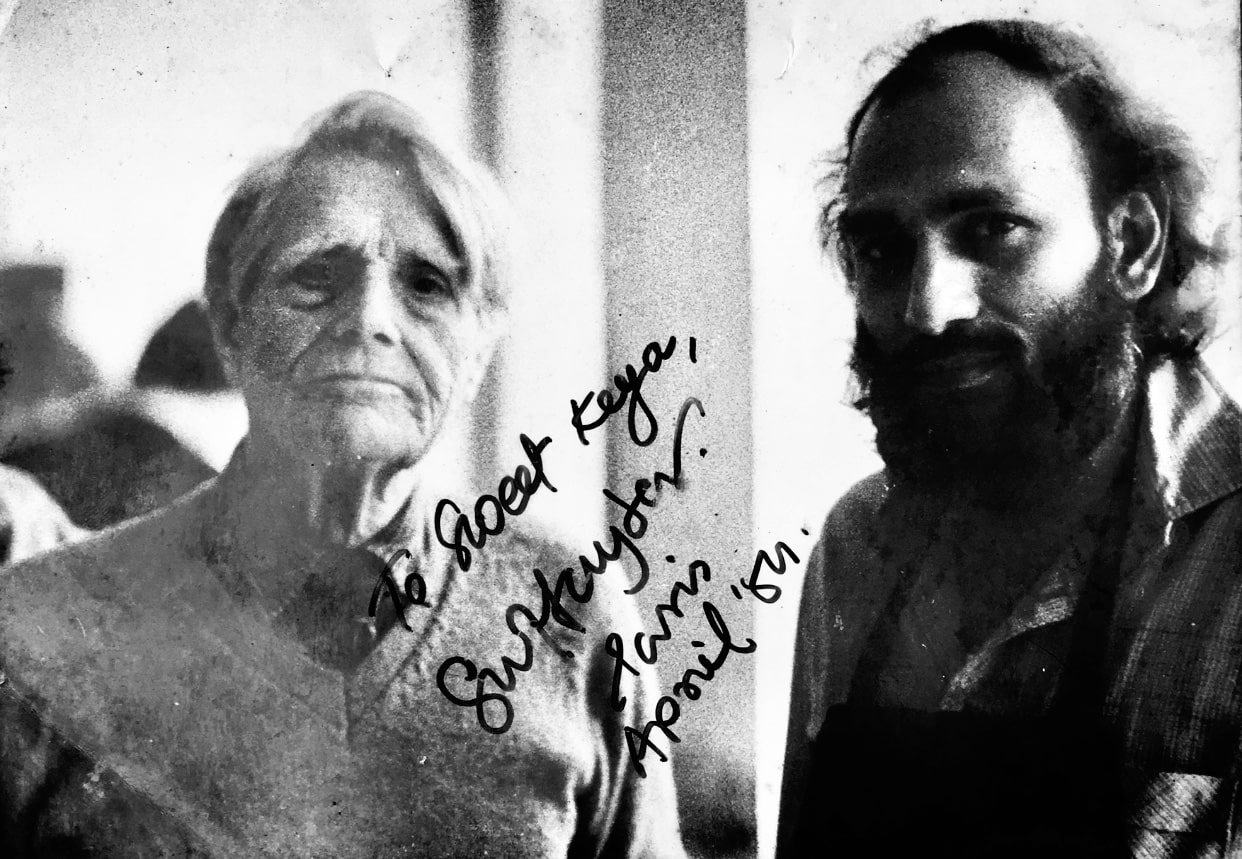
He was gifted two printmaking machines by the Polish and French government, with which he started his printing studio named Graphic Atelier in a space (garage) beneath the office of eminent Architect Professor Shamsul Wares. Printmaking is now a strong movement in Bangladesh which was brought forward by Kalidas through the inauguration of Cosmos Atelier 71 Printmaking studio. It is the biggest studio not only in Bangladesh, but in whole Asia. Since his first leaving home as a young man, Kalidas hasn’t stopped moving, and this is what perhaps gives him the energy for his ever-renewing creative work and endless youth.
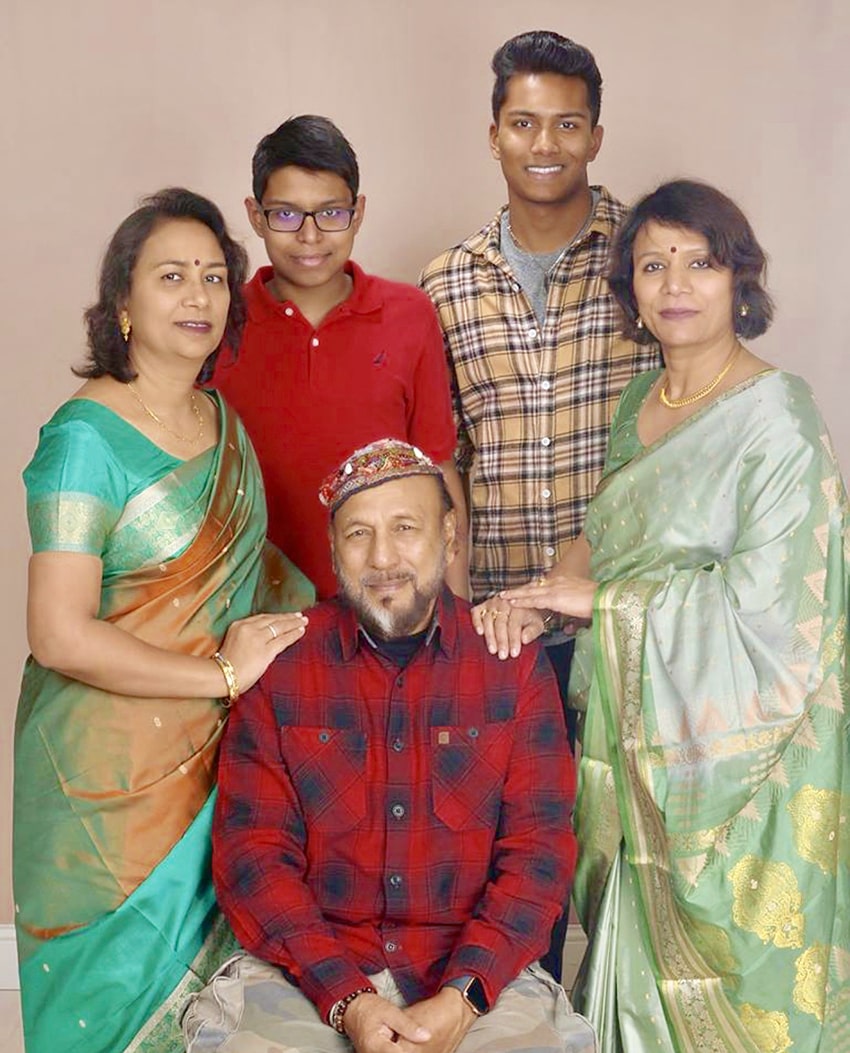
Stylistically, Kalidas has remained somewhat diverse throughout his career. The range of his expertise goes beyond brush on paper to colour etching, metal collage, miniature works, fusion, installation art, performance art and more. His compositions are neatly organized, with use of appealing colours and sensory arrangement of space. Many of his works have a tactile quality to it, with use of unorthodox materials such as shells, hair strands, stones, amulets etc, especially those done on handmade paper, where images are sometimes embossed. He also experiments with different media, combining oil and gouache, or Chinese ink and tempera. His spectacular canvases comprise of whirls of paints with spontaneous yet controlled lines and strokes. He creates abstract forms in graphic prints and enjoys creating multiple textures. Each of these works demands not only a passing gaze but immersive contemplation.
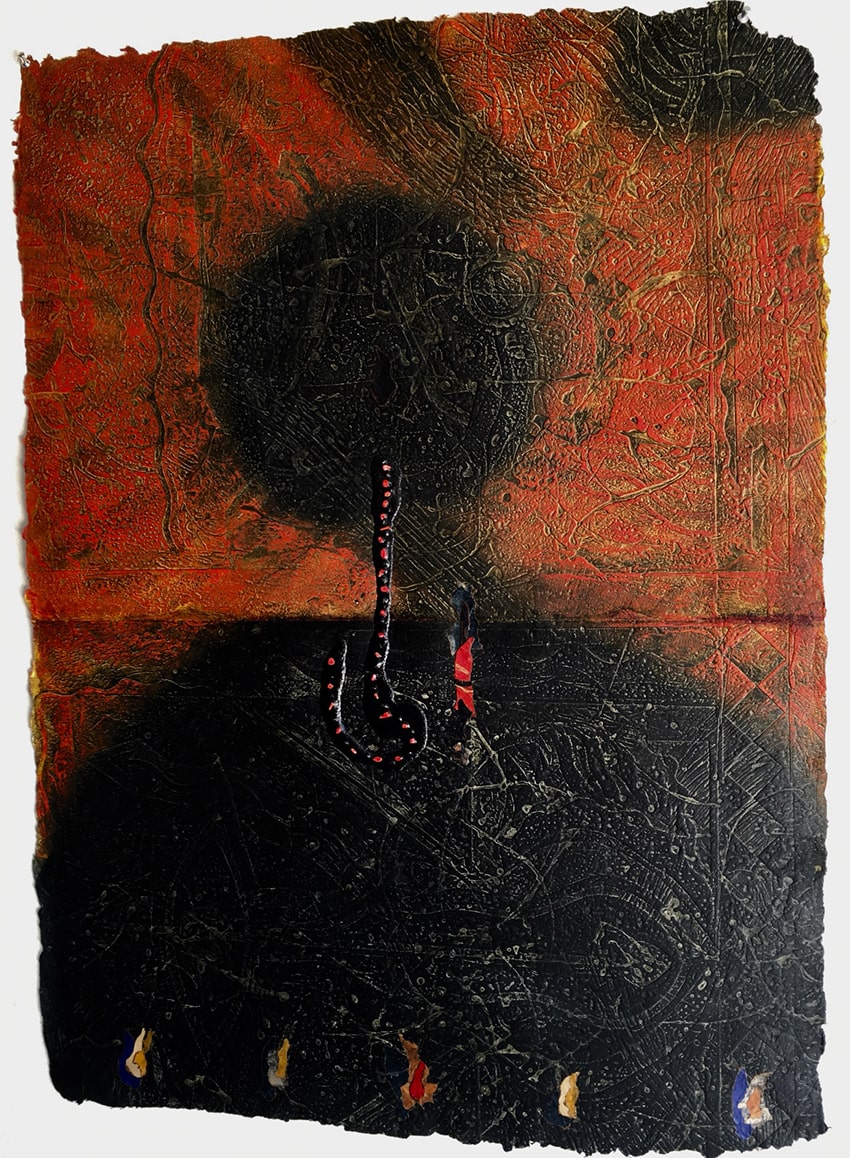
As an ever-evolving artist, Kalidas likes to transmit his feeling and passion for life to the viewer. He has a weakness for the surreal, combining familiar images with impossible forms. His philosophical attitude is expressed through abstraction and symbolism where he explores Tantric principles, Holy Symbols etc. He rarely gives titles to his artworks, leaving no clue to his viewers. He believes abstraction can say more about human than the reproduction of nature and objects.
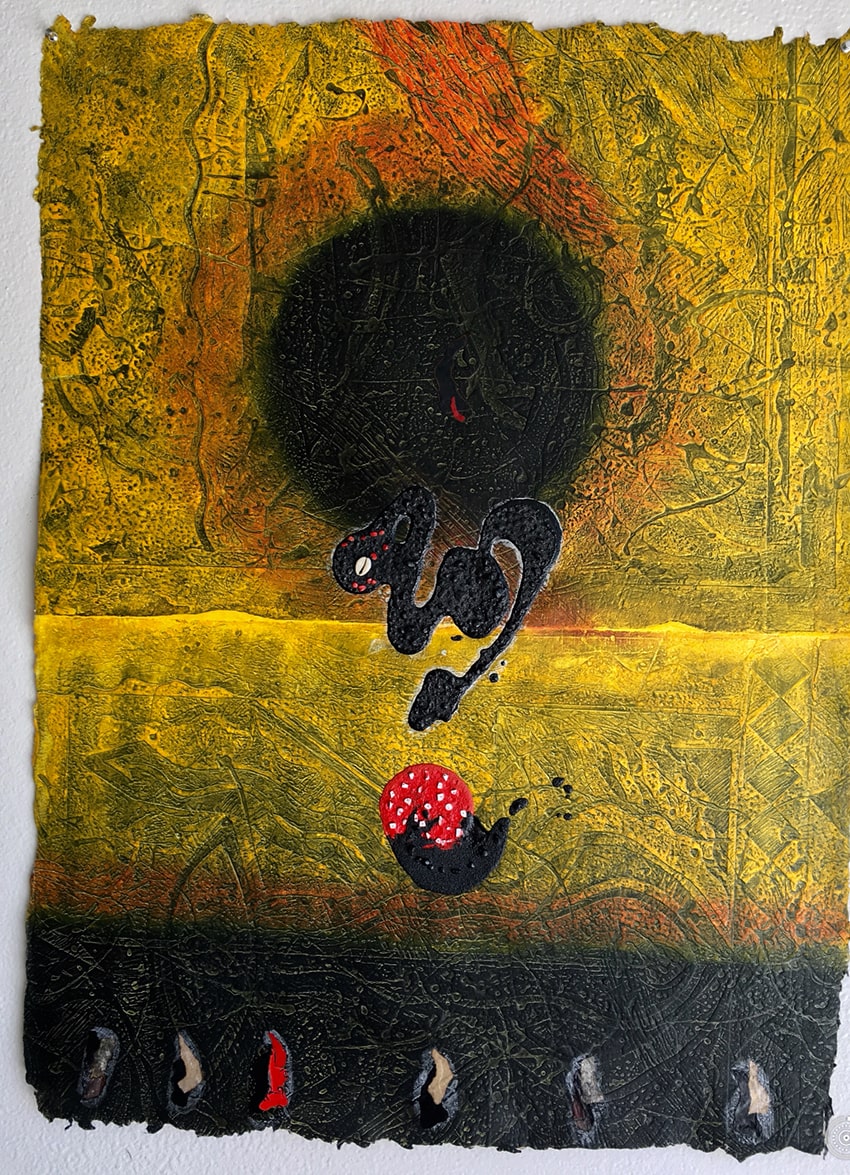
In last few years, he has focused on his “Alluvial Images”, a theme that outpours the emotions embracing both history and geography of his motherland. In many ways, these artworks explore the global realities that confront the contemporary world. Another recurring motif in his work is portraits of faces against a splash of colour. Titled “Alluvial faces”, these faces symbolize helpless existence of modern man and his suppressed emotions, soundless cries and unshed tears.
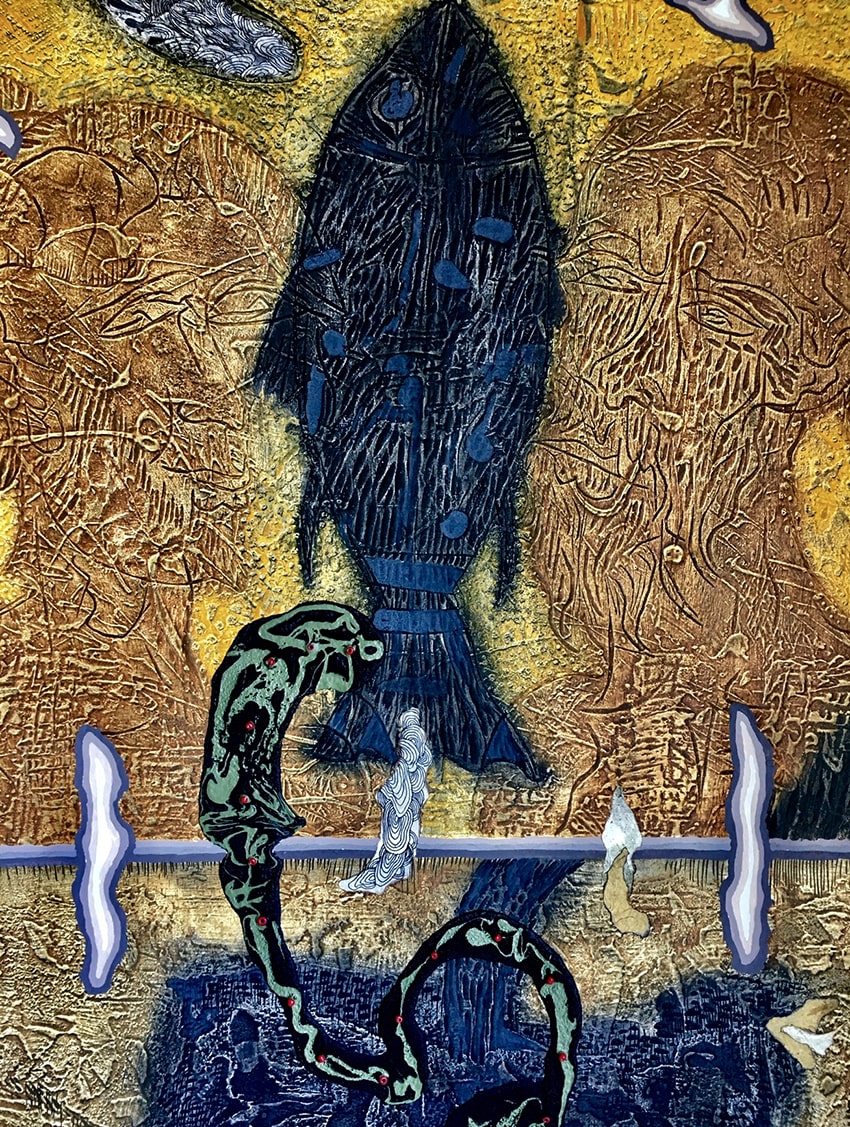
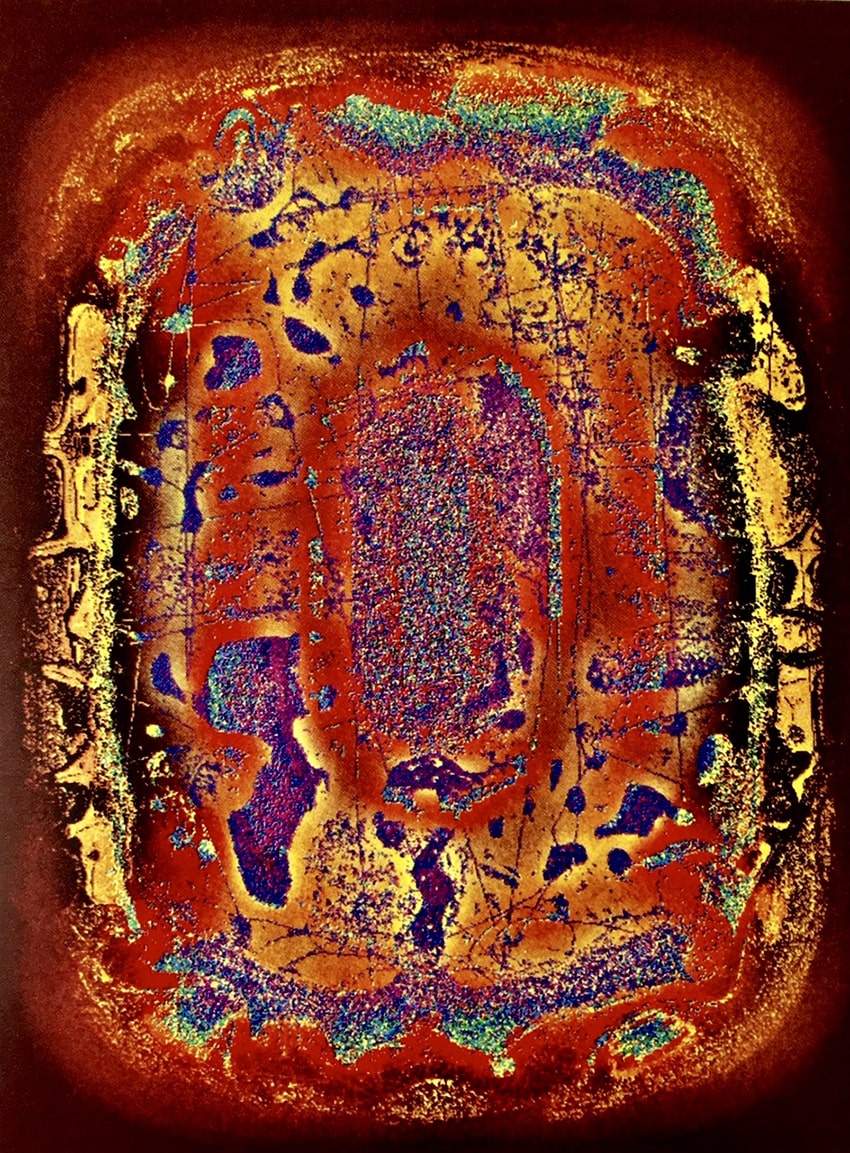
His spectacular canvases comprise of whirls of paints with spontaneous yet controlled lines and strokes.
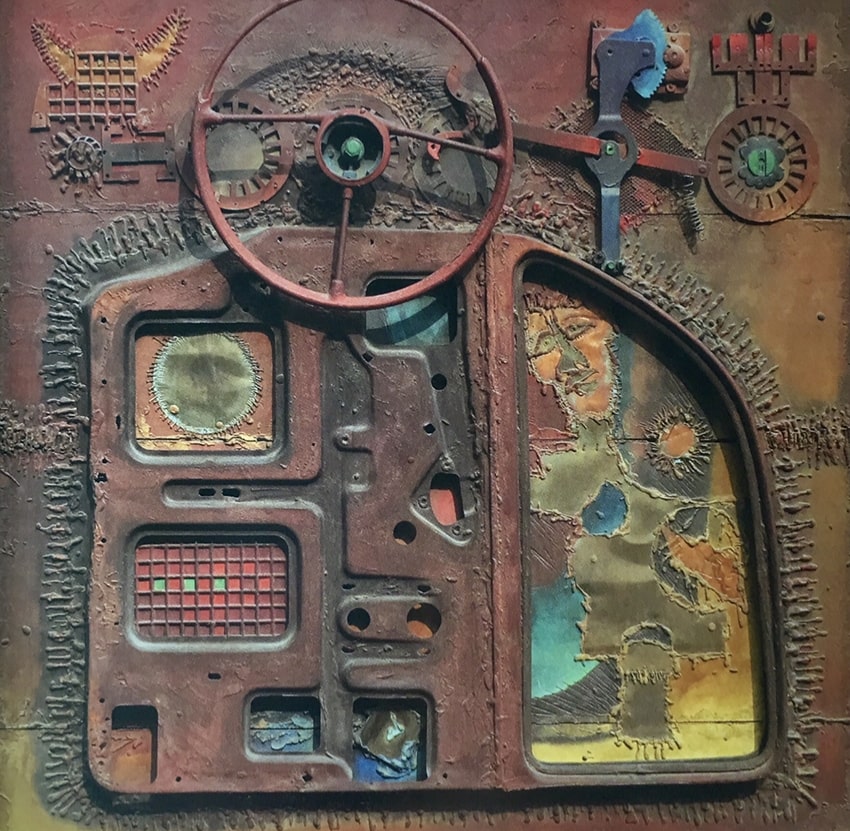
As a profound thinker, Kalidas Karmakar emphasizes on seeking inspiration from own soil and culture. “Due to the internet, you can easily see any museum, any art gallery, and any artists’ works on your tab or smartphone. On one side, it is wonderful that technology has made this possible; however, the negative side is that because of this, young artists are struggling with originality. An artist should get inspiration from his surroundings, his soil, his culture and heritage. Our Bengali culture is many centuries old. Be globalised in your thinking, but the subject and conviction, their motif should represent your own soil and culture”, he explains. He also stresses on the need of a modern art museum in Dhaka city, where works from celebrated artists like Zainul Abedin, Quamrul Hassan, Mohammad Kibria and younger artists can be displayed permanently and people of Bangladesh and foreign delegates can come to see them.
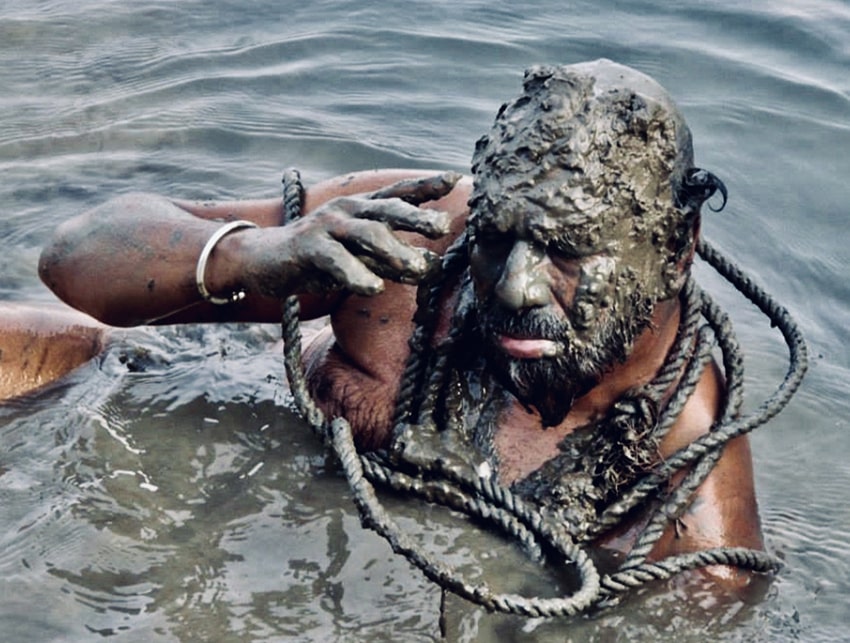
An artist should get inspiration from his surroundings, his soil, his culture and heritage
Kalidas Karmakar achieved many awards and honours for his contribution and added prestigious national awards like Ekushey Padak and Shipakala Padak to his accolades. In his creative endeavours, Kalidas Karmakar keeps on challenging himself by finding new relationships between form and space and creating new meanings of interaction through his works of art. With more than 40 years of fruitful art making, he has proved himself as a major defining artist of his generation.


